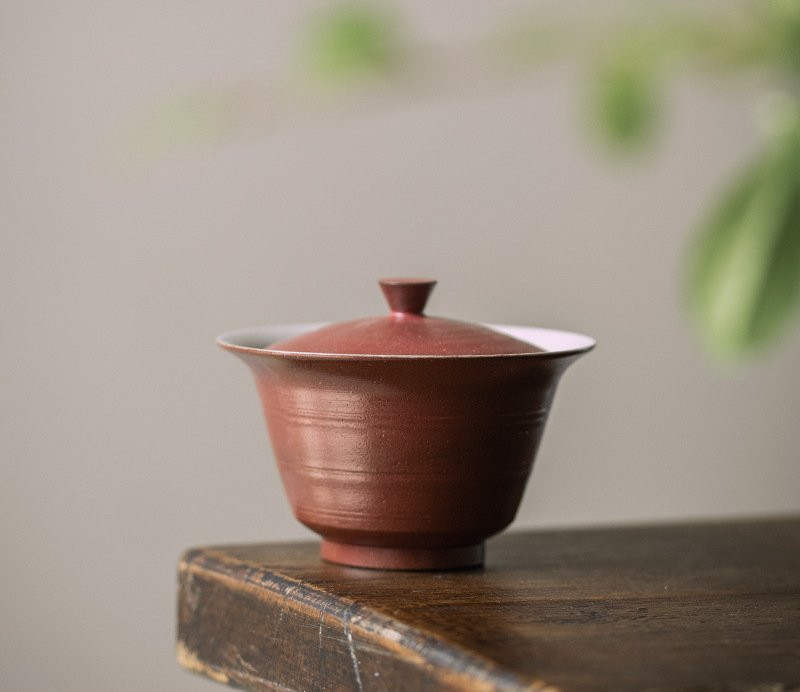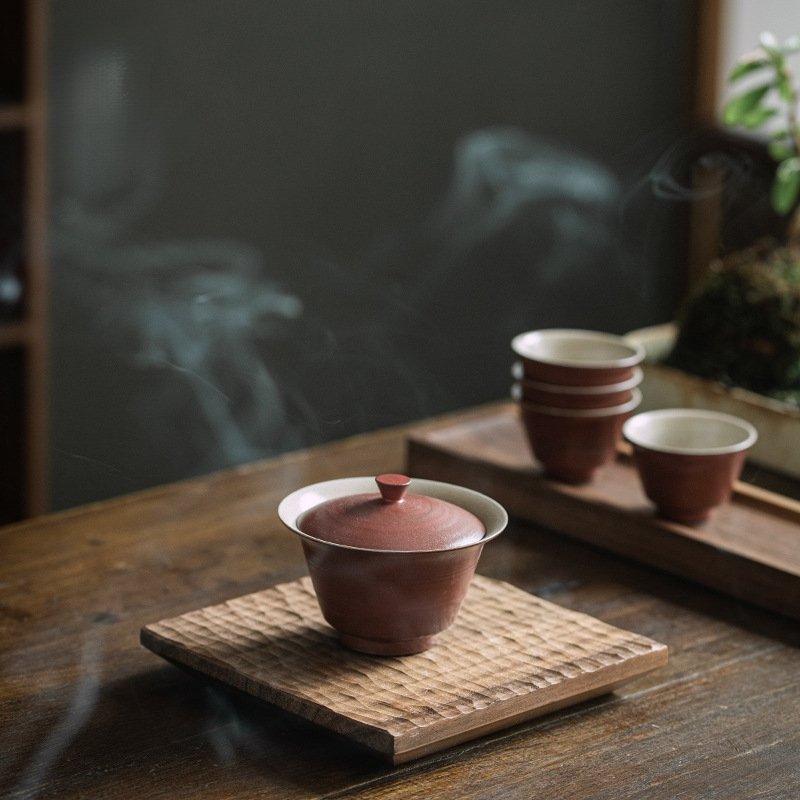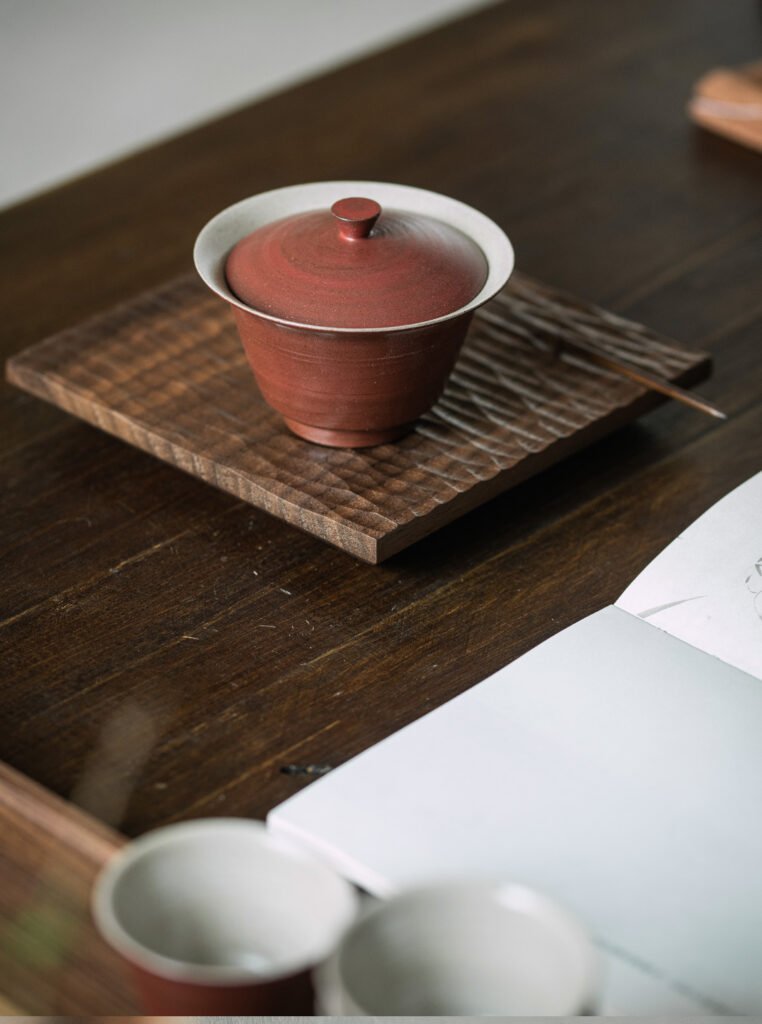Part 1: The Teacup That Spoke to Me
I sat at my table yesterday, holding a handmade ceramic teacup—a rustic red-brown cover bowl, its lid slightly uneven, its surface speckled with natural marks. It looked like it had a story, like it had been shaped with care. I poured tea, and the warmth of the clay felt alive in my hands. Compare that to a machine-made piece—perfect, shiny, but empty. That teacup showed me why handmade ceramics are so loved.
On our site, we cherish the beauty of handmade pieces like this. Let’s dive into why they often steal the show over machine-made ones.

Part 2: The Morning Ritual—Feeling the Difference
Every morning, I make tea in that red-brown teacup. Its rough texture, the way the lid sits just a bit off-center—it’s not flawless, but it’s comforting. A machine-made cup would be smooth, symmetrical, predictable. But this handmade one? It’s like a friend—imperfect, warm, real.
When I lift the lid, I can almost imagine the potter who shaped it, their hands pressing the clay, leaving those speckles behind. That connection makes my tea taste better—not because of the tea, but because of the teacup.
Part 3: The Dinner Table—Standing Out with Soul
Last weekend, I had friends over for dinner. I set out that handmade teacup to serve soup—its earthy red tone glowed against the wooden table. Everyone noticed it. “This is so cool,” my friend said, running her fingers over its bumpy surface. “It’s handmade,” I told her. “You can feel the difference.”
A machine-made bowl would’ve been ignored—too generic, too cold. But this handmade piece sparked conversation. It stood out because it wasn’t perfect—it was alive, with a soul that machine-made ceramics can’t match.
Part 4: The Quiet Corner—Adding Warmth
I keep that red-brown teacup on a shelf when I’m not using it. It sits on a woven mat, next to a small plant. Its natural color and texture make the corner feel cozy, like a little piece of nature indoors. A machine-made piece wouldn’t do that—it’d look out of place, too polished, too sterile.
Handmade ceramics have a warmth that fits anywhere. Their earthy tones, their rough edges—they blend with wood, stone, or linen, making any space feel more human, more inviting.

Part 5: The Gift That Means More
I gave a handmade ceramic piece to my mom last month—a small jar, not unlike that teacup, with a similar rustic finish. She loved it. “It feels so special,” she said, holding it. “Like someone made it just for me.” That’s the magic of handmade—each piece feels personal, like a gift from the potter to you.
Machine-made ceramics? They’re just products—mass-produced, impersonal. When you give a handmade piece, you’re giving more than an object—you’re giving care, time, and a story.
Part 6: The Making Process—A Labor of Love
That teacup didn’t come from a factory. Someone dug the clay, kneaded it, shaped it on a wheel—or maybe by hand, pressing it into form. They fired it in a kiln, watching the heat turn it from soft mud to hard ceramic. The glaze—if there is any—was brushed on, maybe with a drip or two left behind.
Machine-made pieces skip that love. They’re pressed by molds, glazed by robots, fired in bulk. There’s no touch, no care. That red-brown teacup, with its uneven lid and speckled surface, is a labor of love—and you can feel it every time you hold it.
Part 7: The Longevity—Built to Last
Handmade ceramics are often stronger than you’d think. Potters know their clay—they fire it just right, making it tough. That teacup has survived a few clumsy moments—no cracks, no chips. Machine-made pieces can be fragile—thin, uniform, made for speed, not strength.
I dropped a machine-made cup once—shattered on the spot. But my handmade ones? They fight to stay whole. They’re built with intention, not just efficiency, so they last through your daily life.
Part 8: The Connection to Nature
That teacup’s red-brown hue looks like the earth after rain. Its texture feels like a stone smoothed by a river. Handmade ceramics connect you to nature in a way machine-made ones can’t. They’re not over-processed—they keep the raw beauty of clay, the warmth of fire.
Machine-made ceramics are too clean—glossy, artificial, detached. But a handmade piece, like that teacup, brings the outdoors in. It’s a reminder of the earth, of simplicity, of things that grow and change.

Part 9: The Joy of Uniqueness
No two handmade ceramics are the same. That teacup’s lid has a tiny knob that’s slightly off-center. Its surface has speckles no other piece will have. I love knowing it’s one-of-a-kind. Machine-made pieces? They’re clones—thousands of the same shape, same glaze, same everything.
That uniqueness makes handmade ceramics special. You’re not just buying a teacup—you’re buying something no one else has, something that’s yours alone.
Part 10: Bring Handmade Into Your Life
Want to feel that magic? Browse our site. That red-brown teacup, with its rustic charm, is waiting—or pick another piece that speaks to you. We have vases, mugs, bowls—all handmade, all unique. They ship fast, packed tight, arrive safe. Not right? We’ll fix it.
I keep that teacup on my table now—tea inside, a potter’s love outside. That’s why handmade ceramics win—they’re real, they’re warm, they’re yours. Find your piece, hold it close, and let it tell its story in your home.
Wabi-Sabi Rustic Ceramic Cup – Vermilion Series | Vintage Heat-Resistant Tea Brewer
Height: 6.5cm
Capacity: Approximately 100ml

